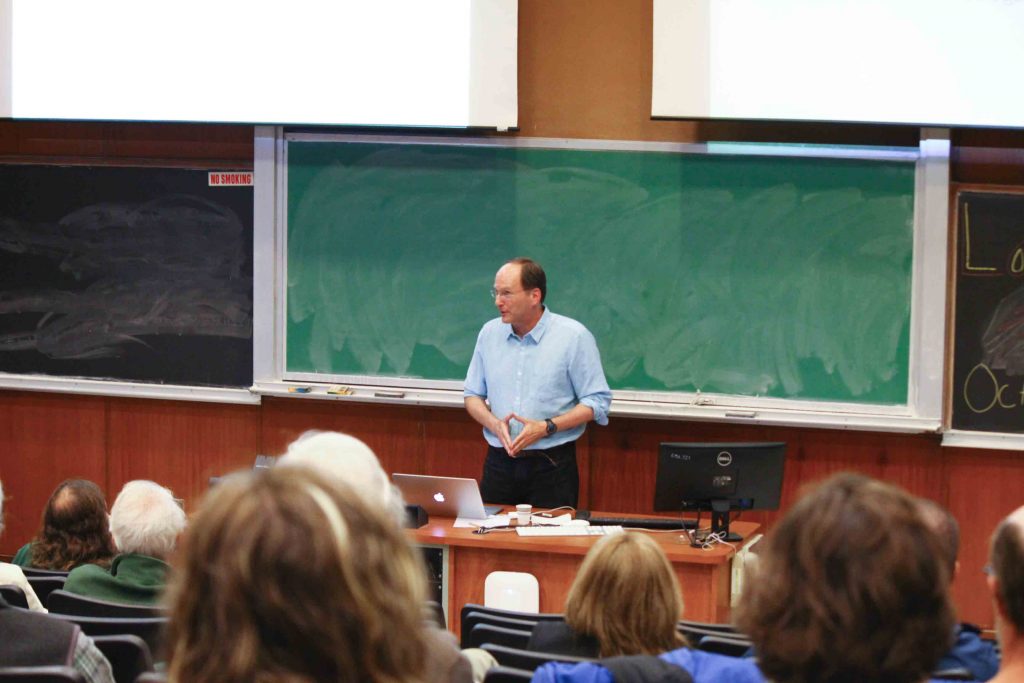
Steven Strogatz, the Jacob Gould Schurman professor of applied mathematics at Cornell University, spoke about communicating math to the general public on Friday in the Science I Building.
His talk, “Doing Math in Public,” was the first in a series of lectures organized by the Binghamton University Writing Initiative and BU’s department of biological sciences that deal with scientific writing. The talks are open to any student who is interested in attending and are spread throughout the academic year.
Strogatz’s has written a number of books such as “The Joy of x: A Guided Tour of Math, from One to Infinity,” “Sync,” “The Calculus of Friendship: What a Teacher and a Student Learned about Life while Corresponding about Math” and others, which help communicate mathematic ideas to non-scientists.
Writing these books led him to be acquainted with David Shipley, an editor working at the New York Times at the time, who asked him to write a series of columns in 2010. The aim of these columns was to bring an appreciation for math to people who never understood math or who missed out on all of its uses.
“That was the pitch,” Strogatz said. “Could I write something, not to teach people how to do algebra, but to show them why algebra is worth knowing in the first place.”
In the process of writing these columns, Strogatz learned through trial-and-error which communication tactics were effective and which weren’t. These lessons were the main topic of his talk at BU. The first thing he talked about was humor and how it could lighten up the topic and make it seem less intimidating. He also spoke about the importance of empathy and being compassionate toward the reader or audience.
“One way to do that, to empathize, is to put yourself in the place of the confused person and be a little confused yourself,” Strogatz said. “Show that it’s okay to be mixed up and that mistakes are instructive, and you can learn a lot by making mistakes. Then get past it and learn.”
The single most effective technique Strogatz said he found, however, was to give his readers a sense of wonder.
“Give them a flash of illumination, if you can,” Strogatz said. “Do not teach. Teaching works if the person wants to learn, but this is a possibly hostile audience — they’re seeing math in the paper. Why are they going to read this? Because you’re going to delight them. You’re going to give them an ‘aha!’ moment.”
Some other techniques mentioned were relating math to familiar experiences and using visual aids. For example, while explaining the concept of Bayes’ theorum, a difficult part of probability theory, he spoke about the chances of a woman having breast cancer, which group she fell in — most likely or least likely — and the overall accuracy of the test that delivered the results. By relating math to a problem everyone is concerned with, it added relevance to the information provided.
Nick Gardner, a first-year graduate student studying math, said the talk was helpful for him as he is always looking for ways to communicate ideas.
“I help teach Math 148, which is statistics for biology majors, and so it’s kind of the perfect math class for making math accessible to people,” Gardner said. “Some of the things he said are going to be really helpful for some of my students, to make it a little less dry to them. I thought it was really great.”
The next talk for the Writing for the Sciences Speaker Series will be on Dec. 5 and the speaker will be Lee Dugatkin, university scholar and professor of biology at the University of Louisville.


